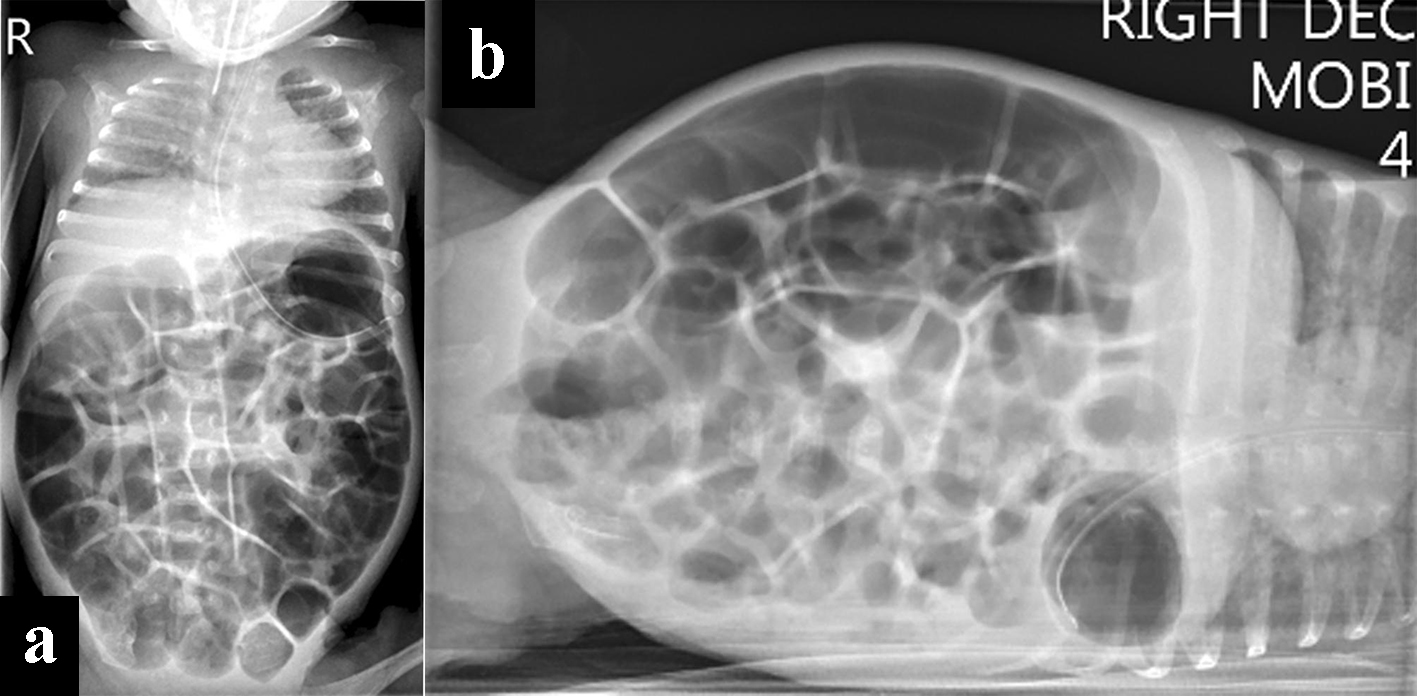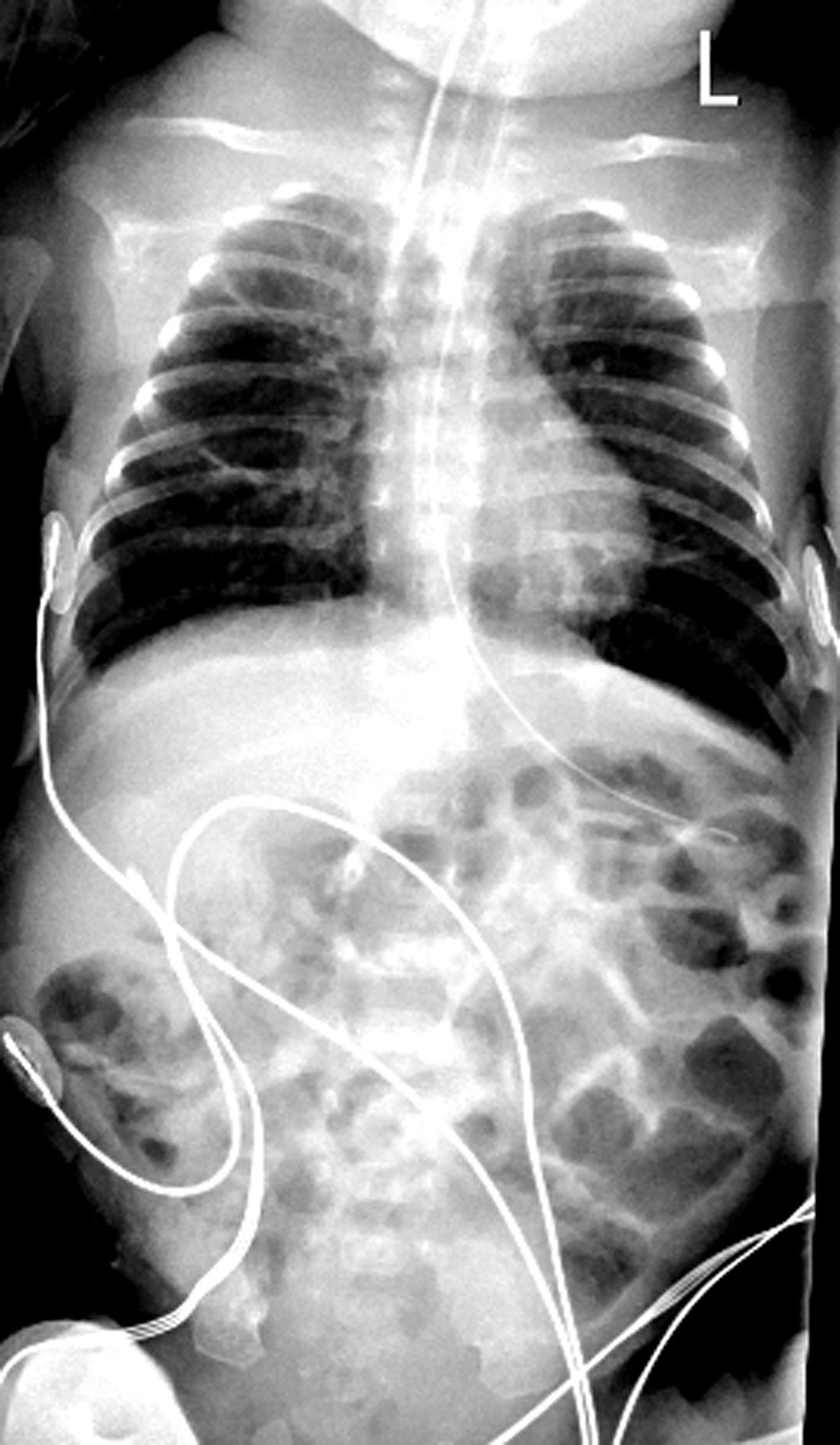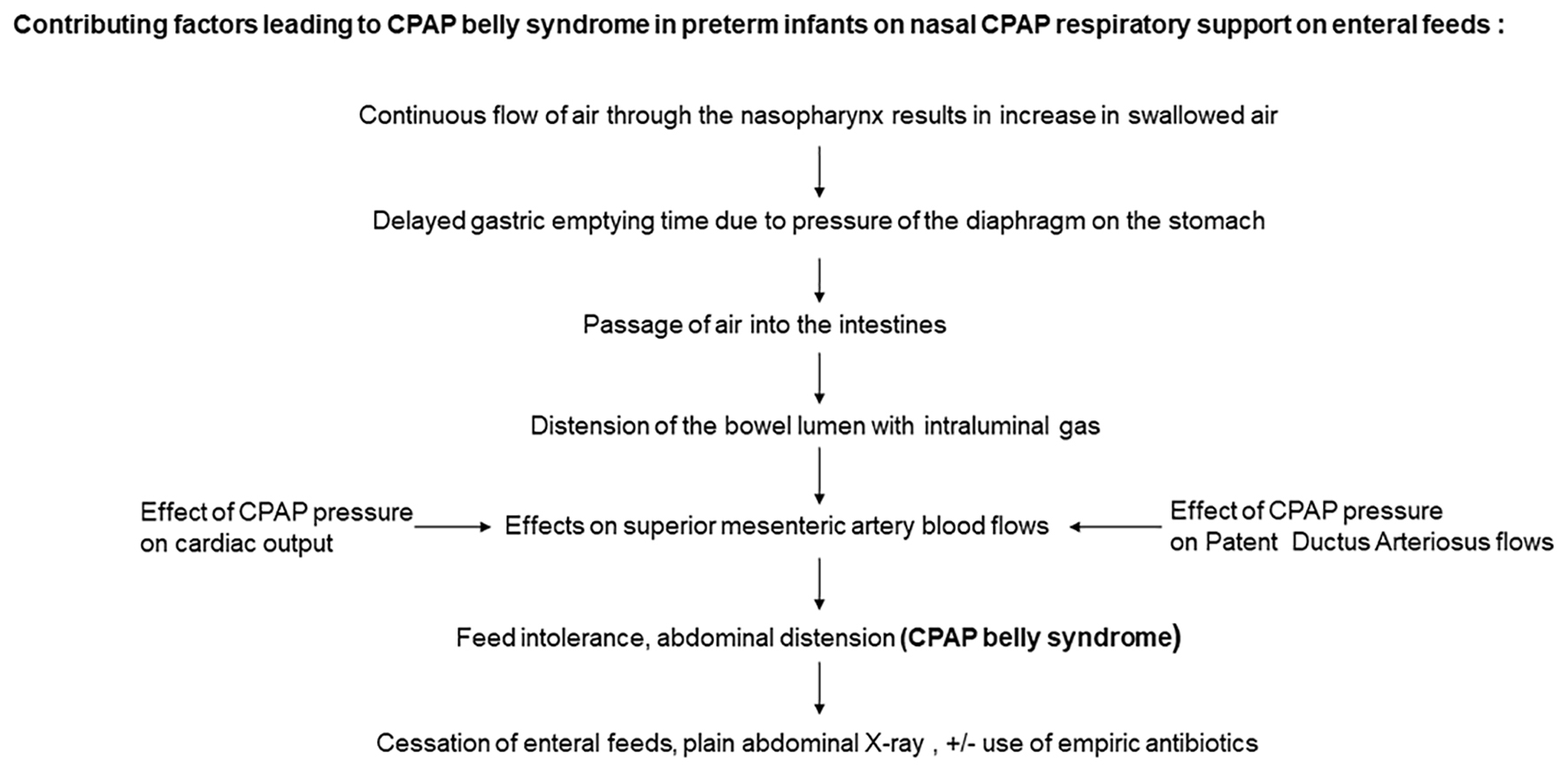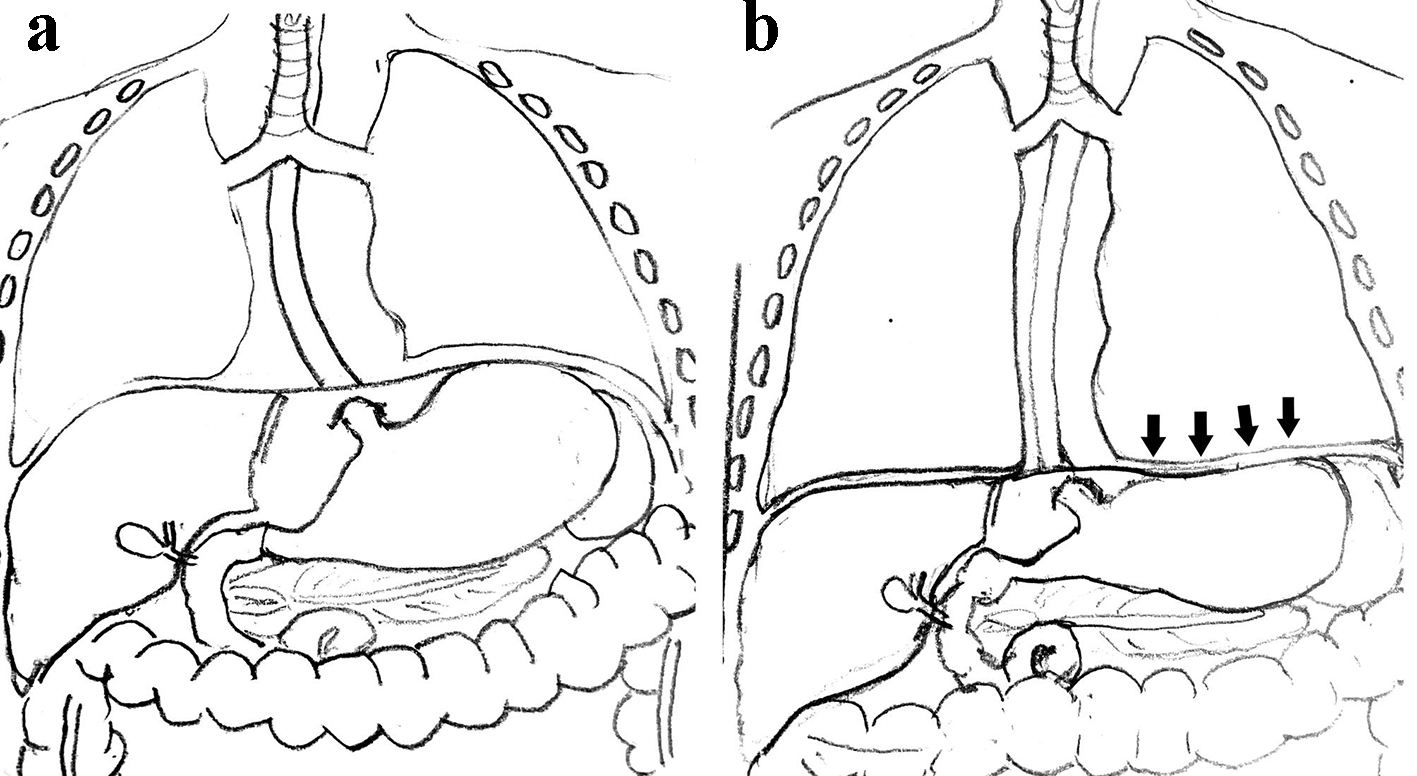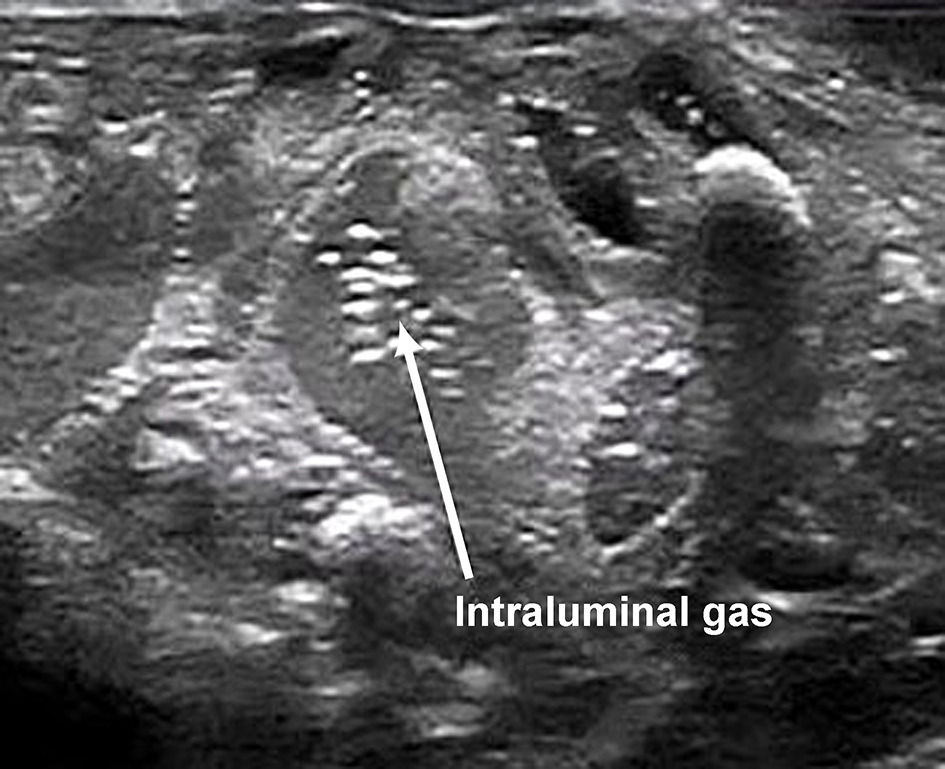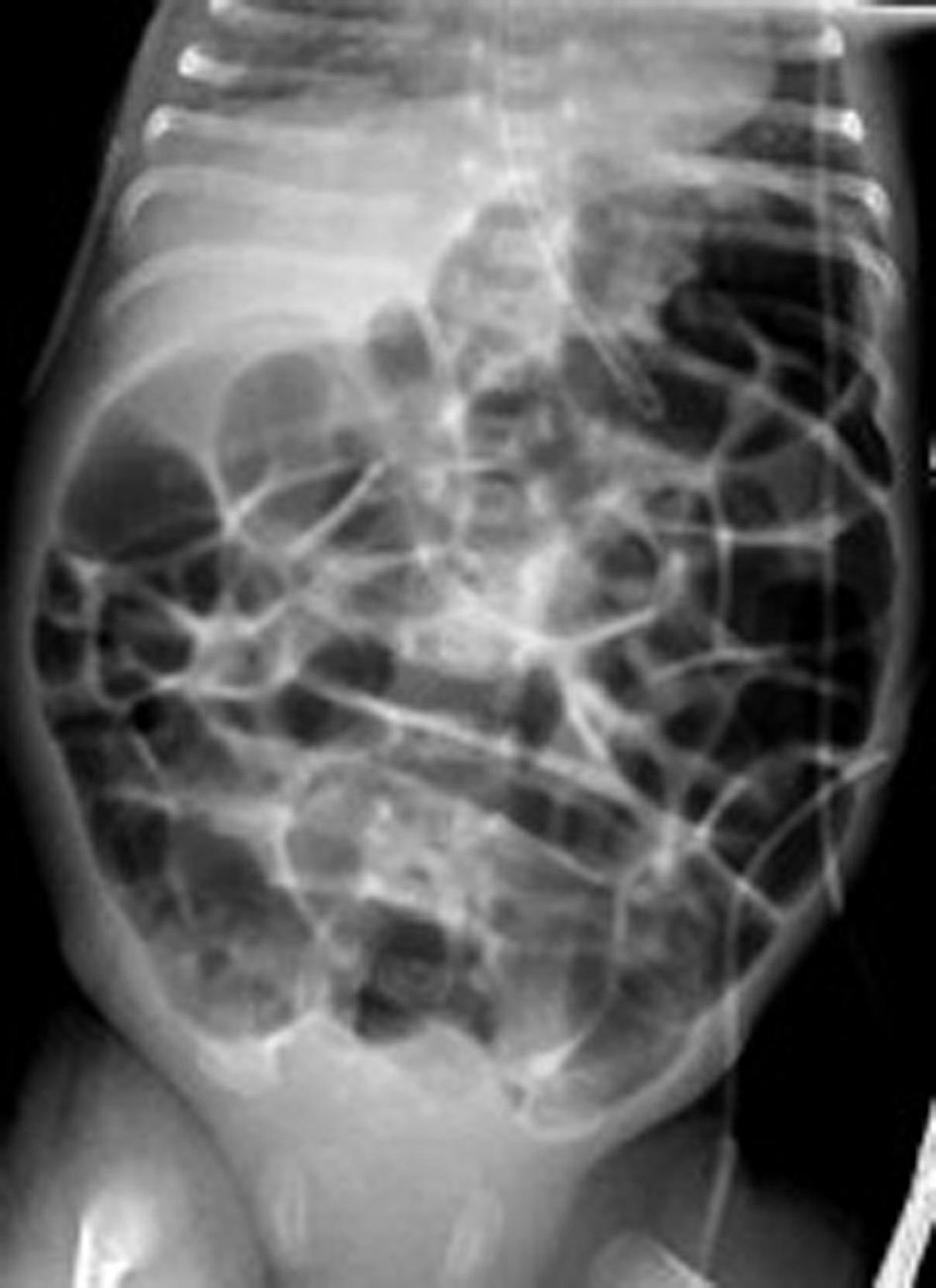
Figure 1. Chest and abdominal X-ray at 3 weeks of age, respiratory support with bubble CPAP of 8 cm of H2O and 6 L/min of gas flow in 25-30% FiO2 showing a normal distribution of the bowel gas pattern. CPAP: continuous positive airway pressure.
| International Journal of Clinical Pediatrics, ISSN 1927-1255 print, 1927-1263 online, Open Access |
| Article copyright, the authors; Journal compilation copyright, Int J Clin Pediatr and Elmer Press Inc |
| Journal website http://www.theijcp.org |
Case Report
Volume 9, Number 1, March 2020, pages 9-15
Continuous Positive Airway Pressure Belly Syndrome: Challenges of a Changing Paradigm
Figures

